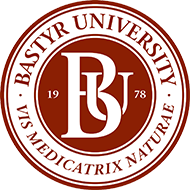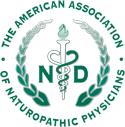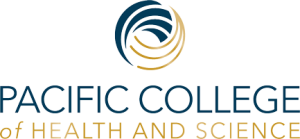Regenerative Injection Therapy
What It Is and How It Can Help
Given how important they are to the functioning of your anatomy, it should come as no surprise that an injury to one of your joints can often have long-term and serious repercussions. This is especially true for your knees and shoulders. If an injury keeps them from operating properly, it’s only a matter of time before nagging pain follows. Soon, it can become difficult to use at all. Many people simply give up and learn to live with the fact that their bodies will never be fully functional again
Fortunately, you don’t have to resign yourself to the same fate.
If you’ve suffered a shoulder or knee injury, consider how prolotherapy could give you your life back – free of pain and limitations to your mobility.
What is Prolotherapy?
Prolotherapy is a procedure designed to stimulate the body’s natural healing process. It’s also sometimes referred to as regenerative joint injection and nonsurgical ligament and tendon reconstruction. During prolotherapy, the doctor injects a natural irritant into the soft tissue of an injured joint. As such, the procedure is highly regarded as a method for treating injured joints that don’t require any surgery. It’s also popular among doctors who are tasked with treating arthritis, degenerative disc diseases, and other chronic conditions. In 2005, A Systematic Review of Prolotherapy for Chronic Musculoskeletal Pain found that:
“Data from 34 case reports and case series and 2 nonrandomized controlled trials suggest prolotherapy is efficacious for many musculoskeletal conditions.”
Another study of prolotherapy concluded that:
“Prolotherapy injection with 10% dextrose resulted in clinically and statistically significant improvements in knee osteoarthritis. Preliminary blinded radiographic readings (1- year films, with a 3-year total follow-up period planned) demonstrated improvement in several measures of osteoarthritic severity. ACL laxity, when present in these osteoarthritic patients, improved. (Altern Ther Health Med. 2000;6(1):68-80)”
In short, plenty of research proves the effectiveness of this minimally invasive treatment.
What is Prolotherapy Used to Treat?
Prolotherapy is primarily used for treating joint pain, especially in the knees and shoulders. However, as we touched on above, it’s also been successful in treating other degenerative disc diseases. Often, it’s even prescribed as an alternative to actual surgery for addressing these issues.
Aside from joint pain, the most common conditions prolotherapy is used to treat include:
- Arthritis
- Chronic headaches
- Damaged ribs
- Degenerated or herniated discs
- Fibromyalgia
- Fractures
- Frozen shoulder
- IT band syndrome
- Lower Back Pain
- Neck pain
- Plantar fasciitis
- Post-injury care
- Sciatica
- Surgical scar reduction
- Temporomandibular joint (TMJ) disorder
- Tendonitis
- Torn cartilage, ligaments, and tendons
- Traumatic pain
- Whiplash
How Often Do I Need Prolotherapy?
How often a patient needs prolotherapy will depend on the severity of their injury and other unique factors. For example, everyone naturally heals at different rates, which means two people with the same injury could require a different number of sessions.
Usually, at least two are needed to ensure the body’s healing process has been properly activated. Particularly traumatic injuries could need as many as 10 or more, though. Your doctor will be able to advise on the required frequency of prolotherapy treatments after they inspect the source of pain and ask you questions about it.
How Does Prolotherapy Work?
Prolotherapy involves injecting a solution around the injured joint which triggers the body’s natural healing process. As a result, the body starts growing new ligaments and/or tendon fibers to replace the old ones that were damaged during the injury.
Unlike other types of injections (e.g. steroids) that are meant to suppress the body’s inflammatory response, prolotherapy does the opposite. The solution is designed to temporarily provoke inflammation, which, in turn, stimulates the desired natural healing.
Put another way, prolotherapy simply lets the body’s immune system know where it’s needed to heal an injury.
Relief from nagging pain is almost instantaneous. Even better, the benefits of prolotherapy are usually permanent. Once the new ligaments or tendons are fully grown, you should be able to return to normal movements without any pain. Of course, it could take more than one session to enjoy these kinds of results.

What is in a Prolotherapy Solution?
The term “irritant” may be off-putting, but the truth is that the solutions used for prolotherapy are usually made up of dextrose, saline, and a numbing agent like lidocaine.
Sometimes, instead of dextrose, the doctor may use glycerin, procaine, or lidocaine.
Your doctor will know the exact makeup required to best treat your unique injury, so it’s impossible to say what the exact composition would be, but it will most likely involve the aforementioned ingredients.
Is Prolotherapy Safe?
Put simply, “yes”, prolotherapy is safe.
In fact, Dr. Alfred A.L.M. Velpeau, “the father of prolotherapy”, first used a modern version of this ancient practice in 1835 when he treated a patient who was suffering from a hernia. Prolotherapy remained a reliable treatment for hernias, though doctors began using the method for a wide array of conditions beginning in the 1920s.
Sufficed to say, it would not have remained such a popular treatment for so many different afflictions if it wasn’t completely safe. This is especially true when you compare it to alternative treatments that involve surgery and/or powerful medications. Prolotherapy doesn’t require any risky medications or even local anesthesia in order to bring about pain relief and healing.
The biggest risk is the possibility of infection after the treatment. Any procedure involving injections carries the same risk, which can be greatly reduced if you simply keep the area clean while it heals. Even if you do contract some kind of infection, antibiotics will be sufficient to treat it most of the time.
Does Prolotherapy Hurt?
It could hurt, but the amount of pain you feel will depend on where the injections are made and the type of injury you have. For the most part, though, the injections are more uncomfortable than anything. Fortunately, the procedure doesn’t take very long, so any discomfort you might feel is over with quickly.
Following the treatment, you may feel some minor pain in the area for 24 to 72 hours. For some patients, the original pain may even increase temporarily.
You won’t have to worry about any scar tissue, though. Prolotherapy usually won’t preclude you from undergoing joint surgery in the future if that becomes necessary for some reason.
What to Expect During Prolotherapy
At my practice, I focus mainly on using prolotherapy to assist with the healing of shoulder and knee injuries.
The actual procedure is incredibly simple. It only takes about 30 minutes from start-to-finish, including preparing the area for injections.
Before I decide whether or not you’re a good candidate for prolotherapy therapy, I’ll review X-rays, MRIs, or any other imaging reports that were taken of your injury. Then, during our initial evaluation, I’ll inspect it myself and may also discuss your current nutrient status. This is also when you can tell me about any medications you’re on as some anti-inflammatory medicines may interfere with the treatment.
If prolotherapy would be effective, we’ll schedule a convenient time for the procedure. I’ll also let you know if it would be best for someone else to do the driving that day.
On the day of your appointment, I’ll carry out the prolotherapy with the help of an ultrasound.
Finally, once the procedure is over, I’ll explain what your aftercare will entail and answer any questions you have. Properly carrying out aftercare is essential for ensuring the procedure is successful.
We’ll also schedule another appointment that will take place about two weeks after the procedure. After I evaluate your progress, I may recommend another treatment if necessary.
How Much Does Prolotherapy Cost?
The good news is that prolotherapy treatments start at $300 at my practice. This compares quite favorably to typical prices. According to Healthline:
“Prolotherapy typically costs between $400–$1,000, depending on the clinic and the part of the body that’s treated.”
Would You Like to Experience the Benefits of Prolotherapy?
No one should have to go through life struggling with a nagging knee or shoulder injury that impedes movement and causes ongoing pain.
That’s why I love introducing patients to the power of prolotherapy.
Whether the injury happened recently, or you’ve been living with pain for years, I would be happy to examine the problem area and determine if prolotherapy could help.
Contact us today to learn more about our unique approach to prolotherapy and how it has already helped people just like you reclaim pain-free mobility.
What is the Process?
- Make an appointment with Dr. Kim for an initial evaluation.
- We need to obtain your current imaging reports such as an MRI or X-ray before seeing Dr. Kim.
- On your initial evaluation, Dr. Kim will decide if you are a good candidate for Prolotherapy. Nutrient status might be discussed as well.
- If you are a candidate for Prolotherapy, you can make an appointment for Prolotherapy. If not, Dr. Kim will refer you to appropriate care.
- On the procedure day, you might need a driver for your transportation
- Prolotherapy will be administered safely under ultrasound-guided injection.
- Aftercare will be instructed.
- Follow up with Dr. Kim in 2 weeks for a quick evaluation if applicable.
- Follow up with Dr. Kim in another 2 weeks and he will decide if you need further therapy. If needed, schedule for further Prolotherapy.
- And repeat from 5 to 9.

Fee Schedule
$ 300
Prolotherapy, per area
Discount for Services
15% discount for 5 treatments
20% discount for 10 treatments
If you have a health savings account or a flexible spending account, you may also be eligible to cover the cost of our services and tests.
If you have a health savings account or a flexible spending account, you may also be eligible to cover the cost of our services and tests.




